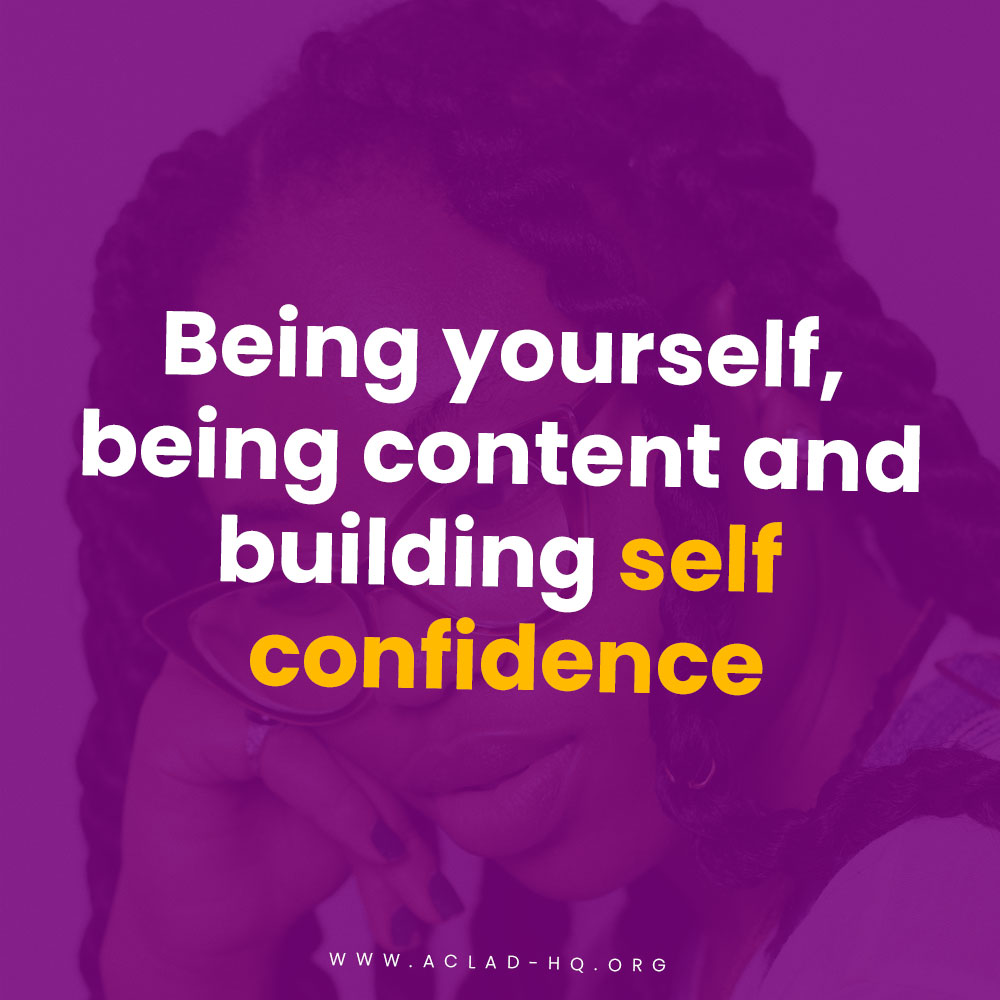Being yourself, being content and building self confidence

Adolescence is a time when many young people experience low self-esteem, self-worth and self-confidence due to physical and hormonal changes they experience during that time. These bodily changes can cause their self-confidence to become fragile. A study conducted by Harter[1] (1990, 1999) showed that satisfaction with physical appearance is a large component of self-esteem, and adolescent girls have greater dissatisfaction with physical appearance than do boys. Further, the study showed that levels of self-esteem in adolescents vary depending on factors such as gender, ethnicity, social status, appearance and general conduct. Today, twenty or so years since Harter carried out her study, things have barely changed for adolescents, in fact, there is even more social pressure piled on them, to fit in. But the Word of God tells us in the creation story that we are created in His image…So God created mankind in His own image, in the image of God He created them; male and female He created them (Genesis 1:27 Bible- New International Version).
Young people and adolescents need to be reassured that they are unique, beautifully and wonderfully made as the Psalmist wrote…You created every part of me; You put me together in my mother’s womb. I praise You because You are to be feared; all You do is strange and wonderful. I know it with all my heart. When my bones were being formed, carefully put together in my mother’s womb, when I was growing there in secret, You knew that I was there (Psalms 139: 13-15 Good News Bible). With this in mind, adolescents need constant reassurance that it is perfectly normal and okay to be different so that they can accept and feel good about themselves.
This positive reassurance will go a long way in decreasing a young person’s vulnerability to poor life choices. In addition, the Encyclopedia of Children’s Health[2] says that children who have high self-esteem have an easier time making friends, handling conflicts, and resisting negative pressures. They laugh and smile more and have a generally optimistic view of the world and their life. Those with low self-esteem have trouble dealing with problems, are overly critical of themselves and can easily become withdrawn, passive and depressed, hesitate to try new things and are pessimistic, seeing the glass as half-empty.
As parents, we can encourage and build the self-confidence of our youngsters by encouraging them and giving praise for accomplishments and successes
Smile. God loves you. Be you. Be beautiful. Be Be-You-tiful.
Catherine Muteithia ACLAD Media Consultant
[1] Harter, S. (1990). Identity and self-development. In S. Feldman and G. Elliott (Eds.), At the threshold: The developing adolescent (pp. 352-387). Cambridge, MA: Harvard University Press
Harter, S. (1999). The construction of the self: A developmental perspective. New York: Guilford.
